Which Operator Can Be Used With a Multiple-row Subquery
The EXISTS operator can be used with multiple-row subqueries. The multi row operators IN ANY ALL must be used with single row operators as shown in the option B.
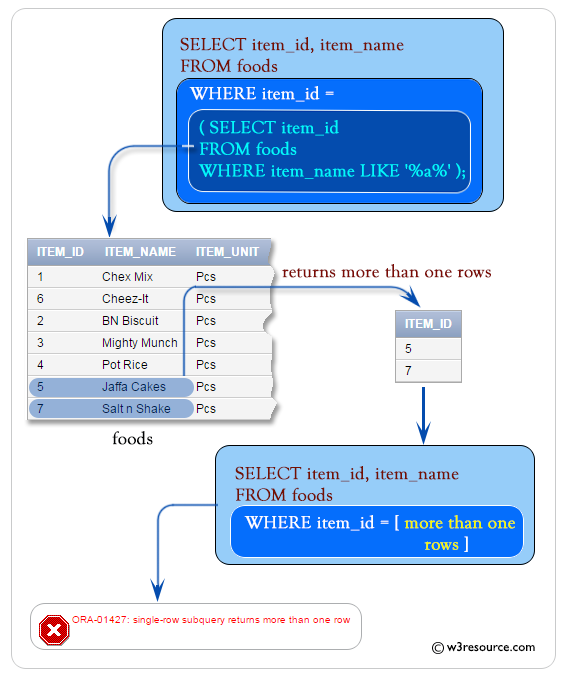
Sql Single Row Subqueries W3resource
Which of the following operator can be used with a multiple-row subquery.

. The EXISTS operator can be used with multiple-row subqueries Multiple-row subqueries are nested queries that can return more than one row of results to the parent query Briefly explain how to embed submacros subforms subqueries and subreports in macro form query and report Access objects. Single-row operators and multiple-row operators. WHERE ocategory icategory.
None of the above View Answer 15. IN operator can be used if subquery returns multiple rows. Since it returns multiple rows it must be handled by set comparison operators IN ALL ANYWhile IN operator holds the same meaning as discussed in the earlier chapter ANY operator compares a specified value to each value returned by the subquery while ALL compares a.
When a statement is written with a subquery the inner query is executed first. Select from gagan_emp where ename like select ename from gagan_emp where deptno10 ERROR at line 1. All rows that were selected by the inner query including the null values.
Which comparison operator cannot be used with multiple-row subqueries. Hello in a test i saw 2 questions. They use the following comparison operators.
SQL SELECT name sal FROM employee. The BETWEEN operator cannot be used with a subquery. Queries that return only one row from the inner SELECT statement.
The inner query has no reference to the outer query. The outer query is then executed with the result from the inner query. It is usually found in a WHERE clause immediately after a comparison operator.
Single-row subquery returns more than one row. Choose two It returns a single row. WHERE sal SELECT MINsal FROM employee GROUP BY dept_no.
There can be more than one subquery returning information to the outer query. The operators used in a single-row subqueries relational operators. What are the uses of IN ANY and ALL in Multiple-row subqueries.
In this Multiple Row Subquery we can use the operators such as IN ANY ALL. Independent sub query is the one where A. When a multiple-row subquery uses the NOT IN operator equivalent to ALL if one of the values returned by the inner query is a null value the entire query returns.
The inner and the outer query are from two different tables B. The inner query returns a value or a set of values to the outer query. TRUE A multiple-column subquery nested in the SELECT clause of the outer query is known as an inline view.
The EXISTS operator can be used with multiple-row subqueries Explain the difference between multiple-row and multiple-column subqueries Single-row operators can be used with multiple-row subqueries that return only one column of results Which of the following subqueries returns more than one row of results to the outer query. Which operator is used to compare a value to a specified list of values. Subqueries cannot manipulate their results internally that is a subquery cannot include the order by clause the compute clause or the into keyword.
When a multiple-row subquery uses the NOT IN operator equivalent to ALL if one of the values returned by the inner query is a null value the entire query returns. Can any1 give me an example where we can use a multiple row subquery with the like operatorI read it can be used but when i tried it gives the following error. FALSE The results of the subquery are passed to the inner query.
Which operator is used to compare the NULL values in SQL. Which operator can be used with a multiple-row subquery. Mark for Review 1 Points.
Examine the table structure as given. Multiple-row subqueries return more than one row of resultsOperators that can be used with multiple-row subqueries include IN ALL ANY and EXISTSThe multi row operators IN ANY ALL must be used with single row operators as shown in the option B. If a subquery can return.
Operator Meaning Equal to Greater than. TRUE An correlated subquery is when the outer query is executed first and then the inner query is executed. IN equal to any member in the list.
A subquery cannot be immediately enclosed in a set function. Equality operator can only be used if subquery returns only one row. The ANY operator compares every value returned by the subquery.
AVG icredit_limit FROM customers i. As far as my understanding goes all of these are comparison operators specifically used for multiple-row subqueries. Mark for Review 1 Points All rows that were selected by the inner query minus the.
What are the distinguishing characterstics of a scalar subquery. Some operators that can be used with multipe-row subqueries are. It will be executed once for every candidate row in the main query.
Which operator can be used with a multiple-row subquery. Note the following statement is illegal because the operator cannot be used with subquery returns multiple rows. For example there are two tables in the SQL.
Multi- row operators that can be used with multiple- row subqueries include IN ALL ANY and EXISTS. Both A and B D. Two classes of comparison conditions are used in subqueries.
Operators that can be used with multiple-row subqueries include IN ALL ANY and EXISTS. Mark for Review 1 Points. The SELECT list cannot include any references to values that evaluate to a BLOB ARRAY CLOB or NCLOB.
However the subquery can appear on either side of the comparison operator. When a Subquery returns more than one value is called a Multiple Row Subquery in Oracle. Multiple-row subqueries are used most commonly in WHERE and HAVING clauses.
Which statement is true regarding routines and triggers. Is this a faulty question or is there something Im missing. Multiple row subquery A multiple-row subquery returns more than one row of data.
All of the above. Which clauses are not allowed in single row subquery. Example to understand Multiple Row Subquery in Oracle We are going to use the following Employee table to understand Multiple Row Subquery with Examples.
Which statement about the ANY operator when used with a multiple-row subquery is true. Subqueries that return more than one row can only be used with multiple value operators such as the IN operator. Then can a subquery return multiple columns.
I understand that the ANY and ALL operator require a single-row operator ie etc to be used in conjunction however this is not.

Sql Multiple Row Subqueries Sql Database Tutorials

Mdx Case Statement Examples For Sql Server Analysis Services Sql Server Sql Analysis

Ssms Tools And Add Ins Sql Server Management Studio Sql Sql Server

Page Not Found Oracle Operator Comparison
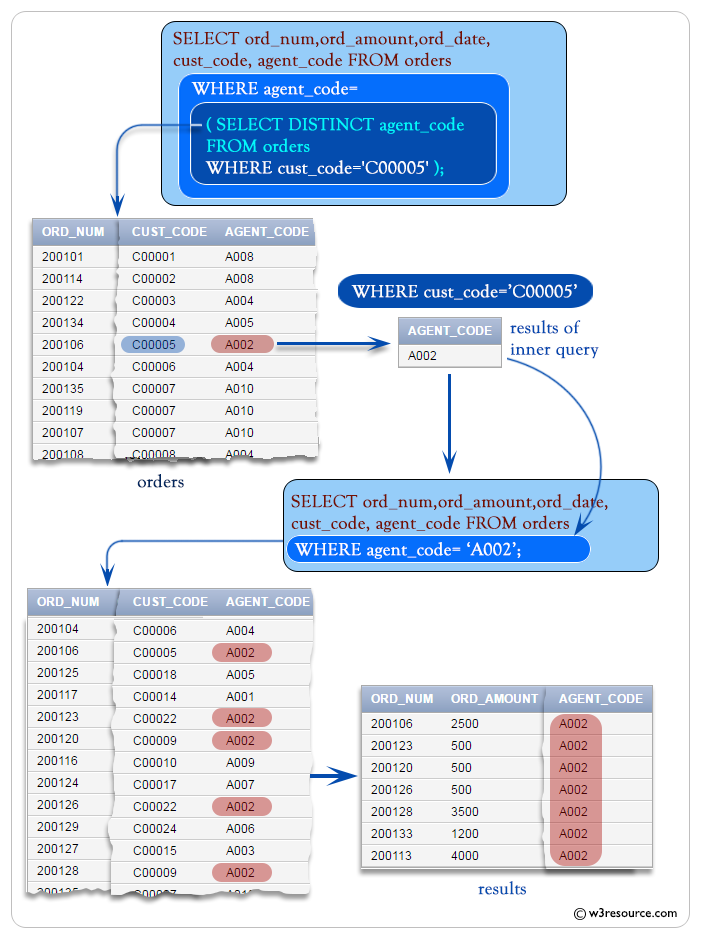
Sql Multiple Row And Column Subqueries W3resource
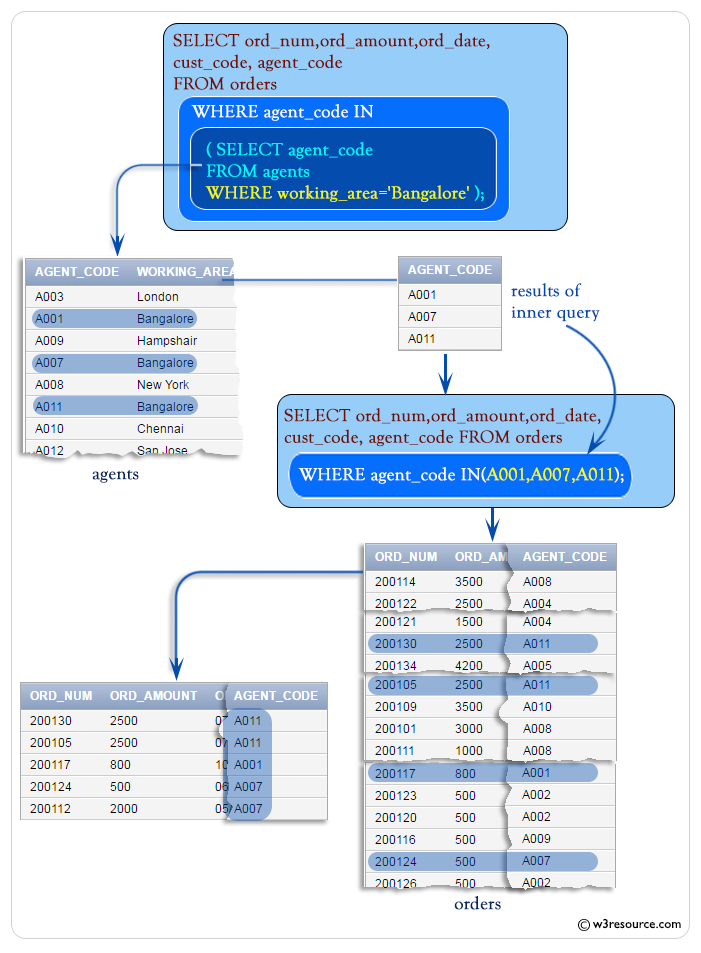
Sql Multiple Row And Column Subqueries W3resource

Mdx Case Statement Examples For Sql Server Analysis Services Sql Server Sql Analysis

Sql Multiple Row Subqueries Sql Database Tutorials

Multi Row Subqueries Introduction To Oracle Sql Youtube

Sql Multiple Row Subqueries Sql Database Tutorials

Sql Multiple Row Subqueries Sql Database Tutorials

Materi Bootcamp Handle Sub Query Multiple Rows Result Dengan Where Operator

Sql Multiple Row Subqueries Sql Database Tutorials

Pemrosesan Query Join Dan Subquery If 6323903 Sistem

Postgresql Subqueries Using Comparisonsa Subquery Can Be Used Before Or After Any Of The Comparison Operators The Subquery Can Retu Sql Arithmetic Being Used

Correlated Subquery 3 Oracle Sql Sql Oracle

Oracle Database 12c Sql Fundamentals 1z0 061 Certification Exam Topics Album On Imgur Oracle Database Sql Exam
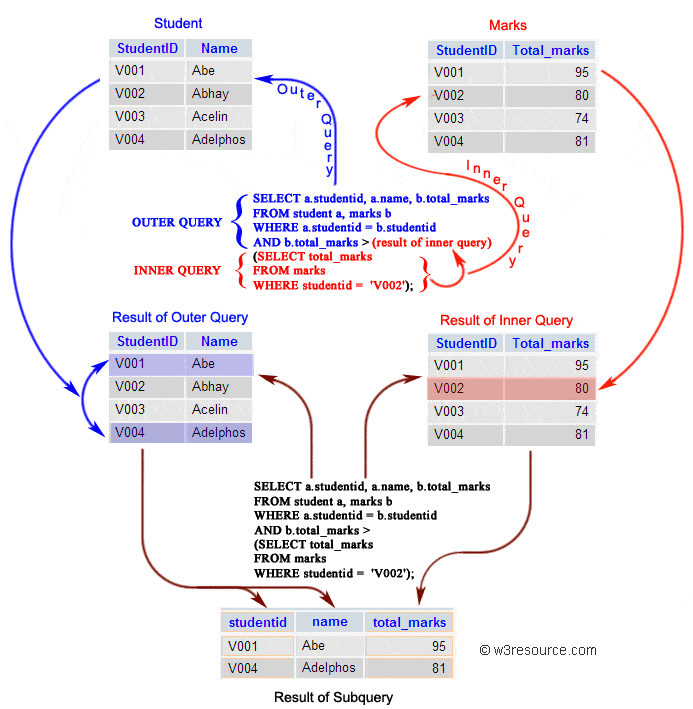
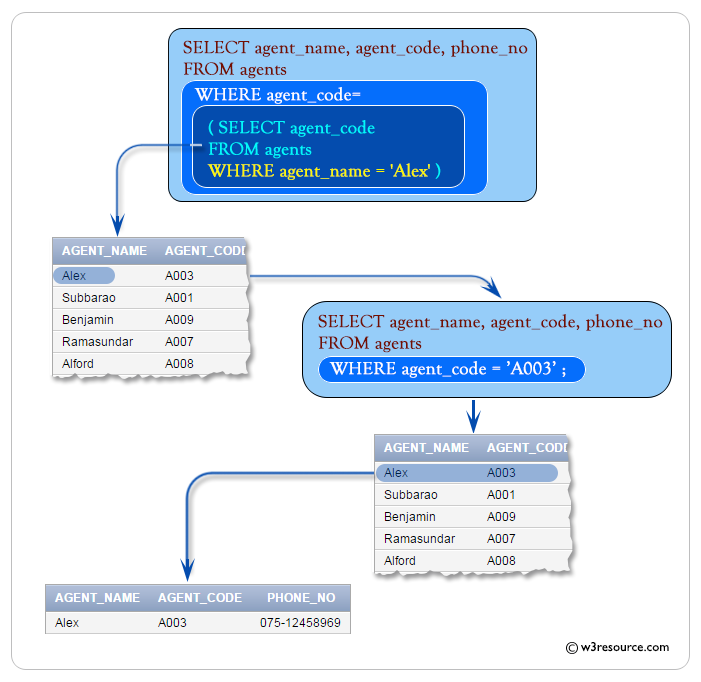
Comments
Post a Comment